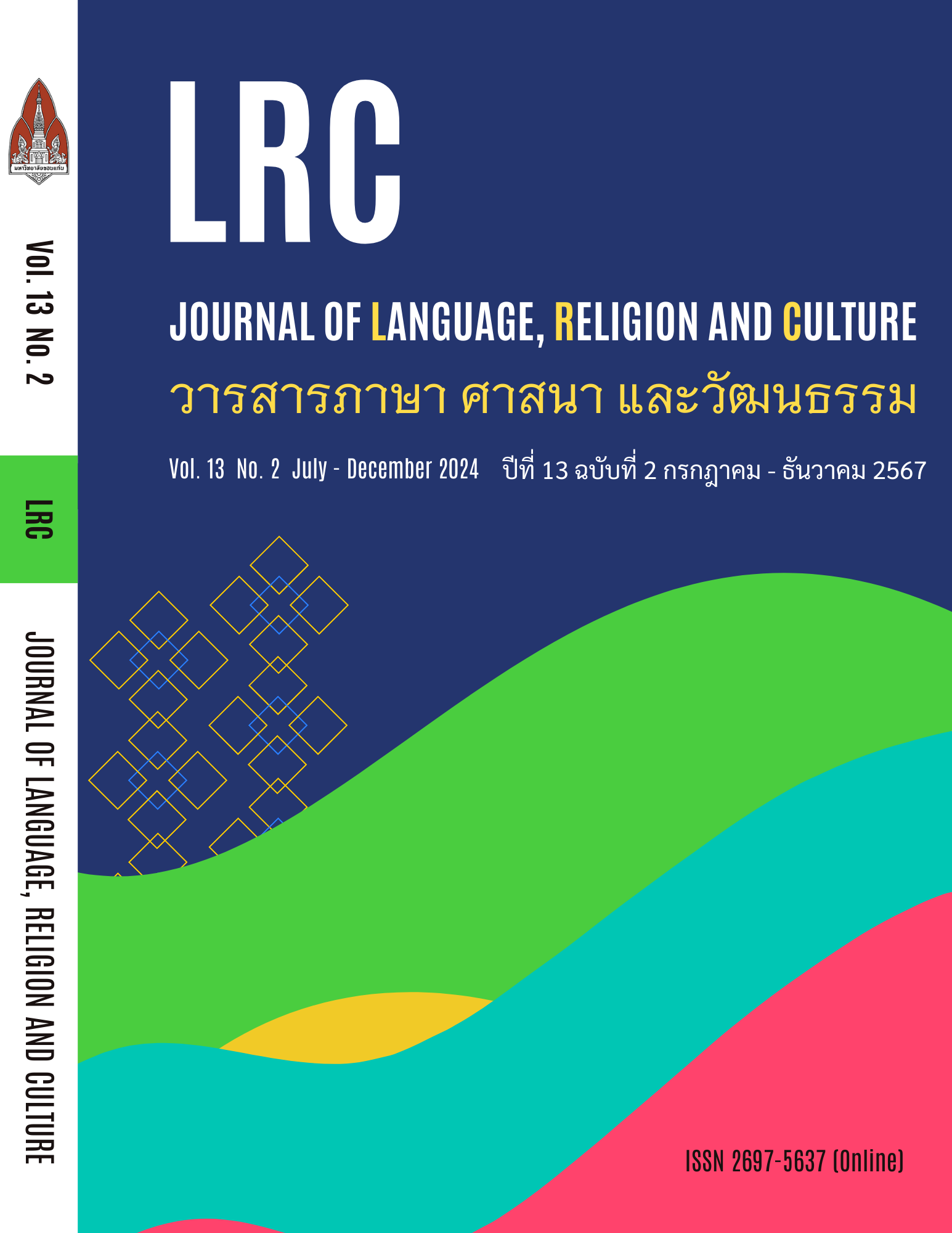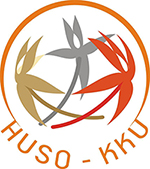กลวิธีในการแปลตัวบทวรรณกรรมไทยเป็นภาษาจีน : กรณีศึกษา การแปลเรื่องสั้นชื่อโลกของแพรว
กลวิธีในการแปลตัวบทวรรณกรรมไทยเป็นภาษาจีน : กรณีศึกษา การแปลเรื่องสั้นชื่อโลกของแพรว
คำสำคัญ:
การแปลภาษาจีนเป็นภาษาไทย, วรรณกรรมไทยบทคัดย่อ
งานวิจัยชิ้นนี้มีวัตถุประสงค์เพื่อศึกษาแนวทางการแปลตัวบทประเภทวรรณกรรมของไทยเป็นภาษาจีนทั้งในระดับคำ และข้อความตามหลักการและทฤษฎีการแปล จากกรณีศึกษาการแปลตัวบทวรรณกรรม ประเภทเรื่องสั้น เรื่องโลกของแพรว ผู้แต่ง สิริมา อภิจาริน ผลการวิจัยคือ 1) การแปลให้บทแปลเสมอกับต้นฉบับอย่างสมบูรณ์ 2) การแปลโดยเลือกคำที่เหมาะสมมากที่สุดจากคำแวดล้อม 3) การแปลโดยเลือกคำที่เหมาะสมที่สุดจากสถานการณ์ในตัวบท 4) การแปลแบบการปรับชนิดของคำให้สอดคล้องกับไวยากรณ์ในประโยค 5) การแปลแบบปรับโครงสร้างประโยคและไวยากรณ์ตามแบบแผนของภาษาฉบับแปล 6) การแปลขยายข้อความเพื่อความเข้าใจของผู้อ่าน 7) การแปลหดแคบข้อความเพื่อลดความซ้ำซ้อน 8) การกระชับข้อความให้หดแคบเข้าและยังมีความหมายเดิม 9) การจัดเรียงประโยคใหม่เพื่อให้ได้ความหมายครบถ้วน และถูกต้องตามระเบียบภาษาฉบับแปล
เอกสารอ้างอิง
Apinya Chomphichit. (2023). Translation Strategies of Tourist Attraction Names in Thailand to
Chinese. Journal of Sinology, 17(1), 56-80.
Catford, J.C.. (1967). A Linguistic Theory of Translation. Oxford University Press.
Dictionary Editorial Office, Institute of Linguistics, Chinese Academy of Social Science. (2016).
Modern Chinese Dictionary (7th Edition). Commercial Press.
Duangta Suphon. (1998). Theory and strategies of translation. Chulalongkorn University Press.
Kanokporn Numthong. (2011). Thai to Chinese translation (2nd edition). Faculty of Humanities,
Confucius Institute, Kasetsart University.
Kanokporn Numtong, Siriwan Likhidcharoentham. (2019). Principles and Precautions in
Translating Chinese to Thai Language and Thai to Chinese Language. Chinese Studies Journal Kasetsart University, 12(2), 105-151.
Larson, M.L. (1984). Meaning-Based Translation: A Guide to Cross-Language Equivalence.
University Press of American.
Liang Yuanling. (2009). Thai-Chinese translation theory and practice. Chongqing University Press.
Newmark, Peter. (1981). Approaches to Translation. Oxford, New York, Toronto, Sydney, Paris,
Pergamon Press.
__________ (1995). A Textbook of Translation. Phoenix ELT.
Nida, Eugene A., & Taber, Charles R. (1969). The Theory and Practice of Translation. Leiden: The
Bible Society.
Pimphan Wessakosal. (2015). Thai to English translation (2nd edition). Thammasat University
Press.
Prapin Manomaiwiboon. (2002). Chinese Grammar (2nd edition). Academic work dissemination
project Chulalongkorn University.
Prapat Noklerdpun, Kewalee Petcharathip. (2024). A Study of Errors in Translating Cultural Words
from Thai to Chinese that Appeared in the Subtitles under the Drama "Love Destiny". Jour of Arts Management, 8(3), 358-380.
Ratchaneeroj Kulthamrong. (2009). Understanding language to translate: From theories to
practice. Chulalongkorn University Press.
Sanchawee Saibua. (2007). Principles of translation (8th edition). Thammasat University.
Sew Sewone. (2557). Thai-Chinese Dictionary. Theory Publishing.
Sirima Aphicharin. (2014). Flowers blooming at Long Beach. Postbook Press.
Supannee pinmanee. (2012). Translation: From wrong to right. Chulalongkorn University Press. ___________ (2014). Advanced translation. Chulalongkorn University Press.
Wallaya Wiwatson. (2002). Fiction Translation. Academic work dissemination project
Chulalongkorn University.
ดาวน์โหลด
เผยแพร่แล้ว
รูปแบบการอ้างอิง
ฉบับ
ประเภทบทความ
สัญญาอนุญาต
ลิขสิทธิ์ (c) 2024 วารสารภาษา ศาสนา และวัฒนธรรม

อนุญาตภายใต้เงื่อนไข Creative Commons Attribution-NonCommercial-NoDerivatives 4.0 International License.







